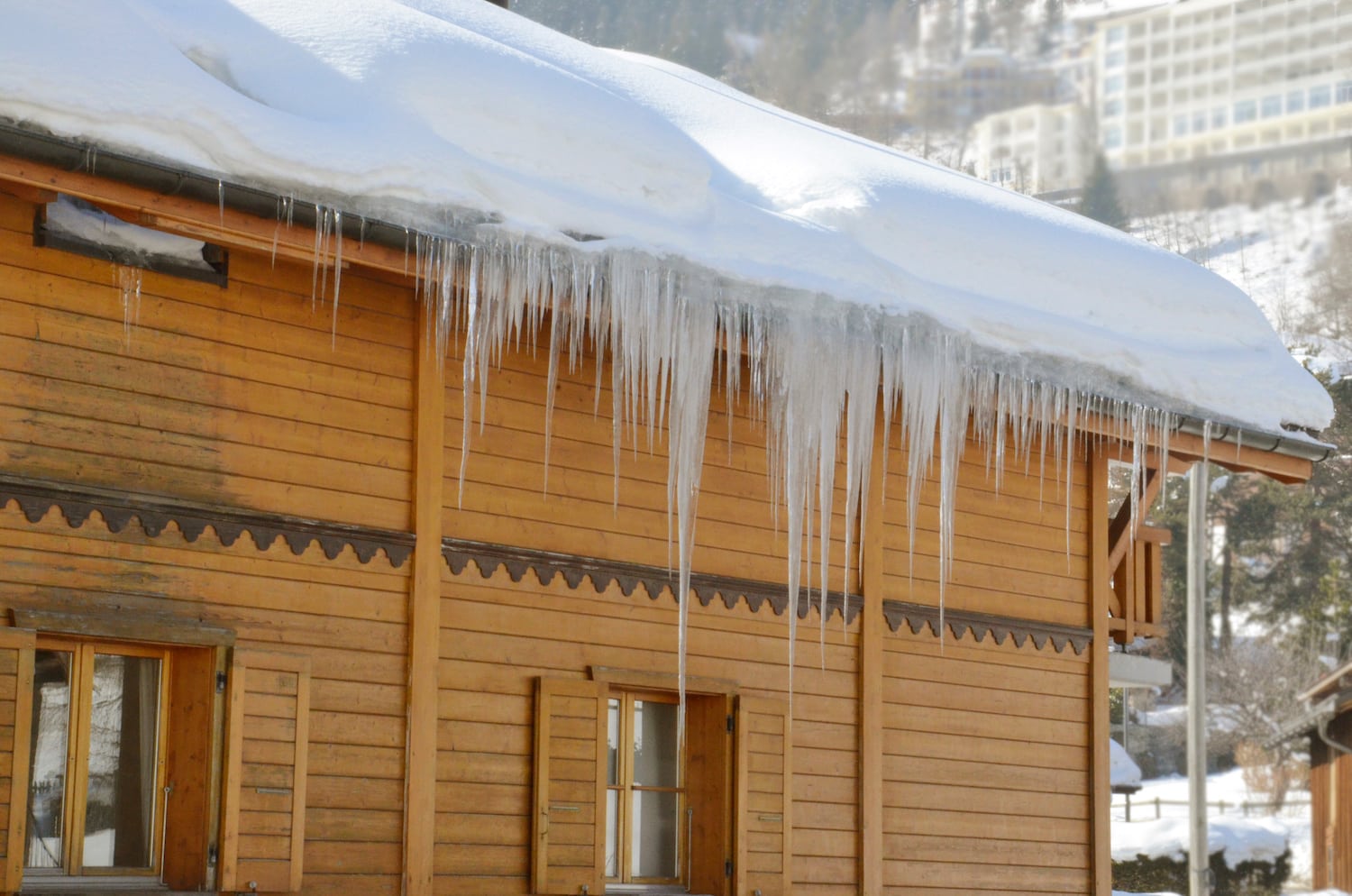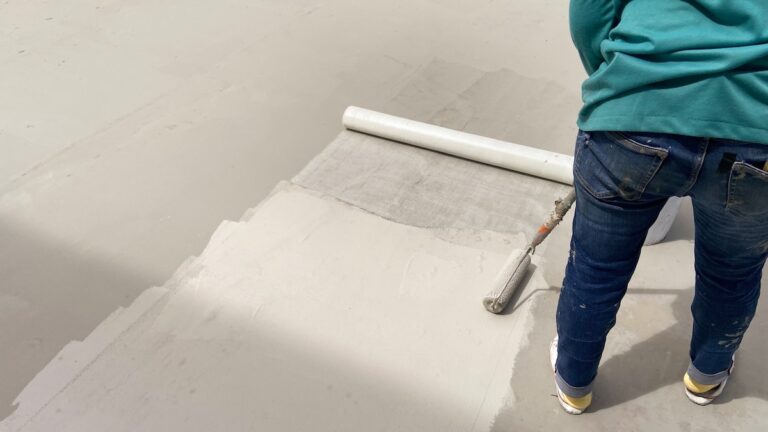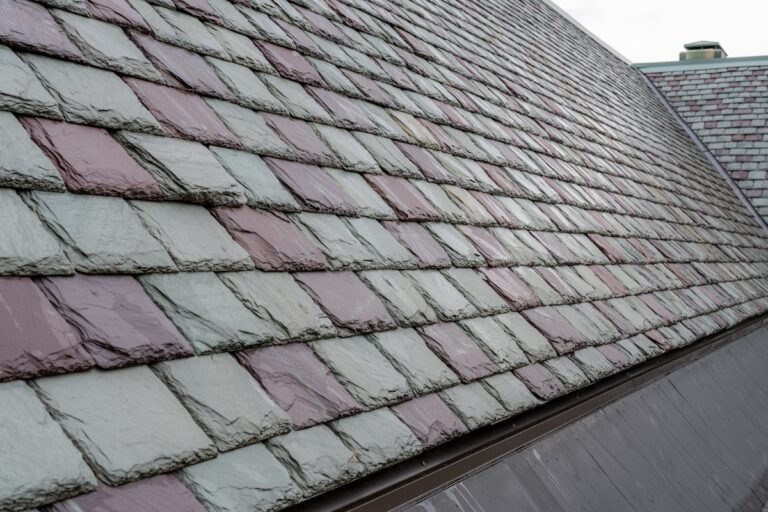Is there anything as pretty as icicles?
It doesn’t feel quite like winter until you see them forming on your neighbor’s roofs, catching the light and sparkling. When they start forming on YOUR roof, though? That’s when you know that the trouble is starting.
No matter how gorgeous they are, icicles are a sure sign that your roof isn’t functioning the way you want it to. Icicles are almost always a part of a larger, much more damaging structure known as an ice dam.
Many homeowners have to deal with ice dams at one point or another. There is a lot of misinformation out in the world about why ice dams form and the proper way to get rid of them. Mislead homeowners often end up accidentally damaging their roof system and causing even more problems.
That’s why we’ve gathered up all the information to help you determine the correct way to remove ice dams and prevent roof ice damage in the future!
What Is an Ice Dam?
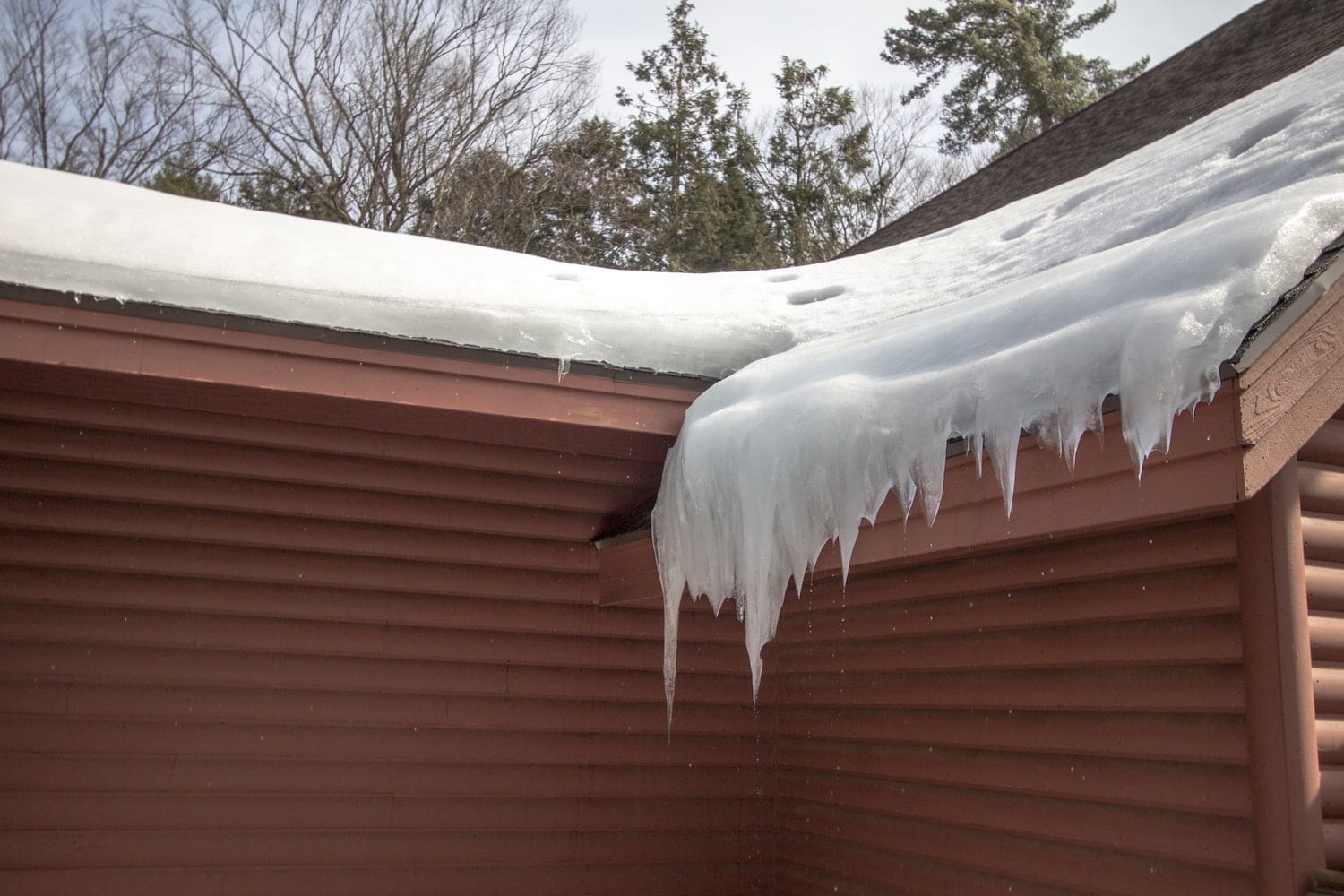
So, what exactly is an ice dam?
Ice dams form at the edge of your roof when there is a distinct temperature difference between the interior and exterior of your home. During the cold winter months, homeowners often crank up the heat to stay warm inside their homes. Sounds cozy, right?
The problem starts when that hot air floats all the way up to their attics, creating a warm roof that starts to melt the snow on top of it. The melting snow then begins to flow down the roof but freezes as it goes, creating a thick ridge of ice.
As the ice dam itself grows, it can create a section of dammed water that gets trapped between the ice and the snow. When this water pools, it can seep through the layers of your roof, creating structural problems for your whole home.
Why Are Ice Dams Dangerous?
A chunk of ice doesn’t seem like a lot of trouble at first glance. But can ice dams really cause THAT much damage your home?
Oh, yes. You’d be surprised by the trouble that these pretty icicles can do. Here are some of the top ways ice dams damage your roof.
- Mold and Mildew Growth – When water gets trapped behind an ice dam, it will begin to penetrate through the layers of your roof until it reaches your attic roof insulation. When this water starts to seep through your insulation, it is easy for mold and mildew to form. While many forms of mold aren’t dangerous, they can create an unpleasant smell that can irritate your respiratory system.
- Roof Leaks – One of the most common forms of ice dam damage is a roof leak. When water gets past your roof deck, it can easily begin to damage your ceiling and create a leak.
- Water Stains – Water dripping from an ice dam on your roof surface can cause water stains to form on your ceiling and walls. These typically present as yellow or brown splotches. Dripping from icicles can also lead to staining and discoloration of your home’s siding.
- Tear-Off Gutters – Ice dams are heavy. We mean really heavy. When all of that snow and ice builds up on your roof edge, it can cause lots of strain on your gutters. Eventually, the weight could lead to your gutters being pulled off of your roof’s edge.
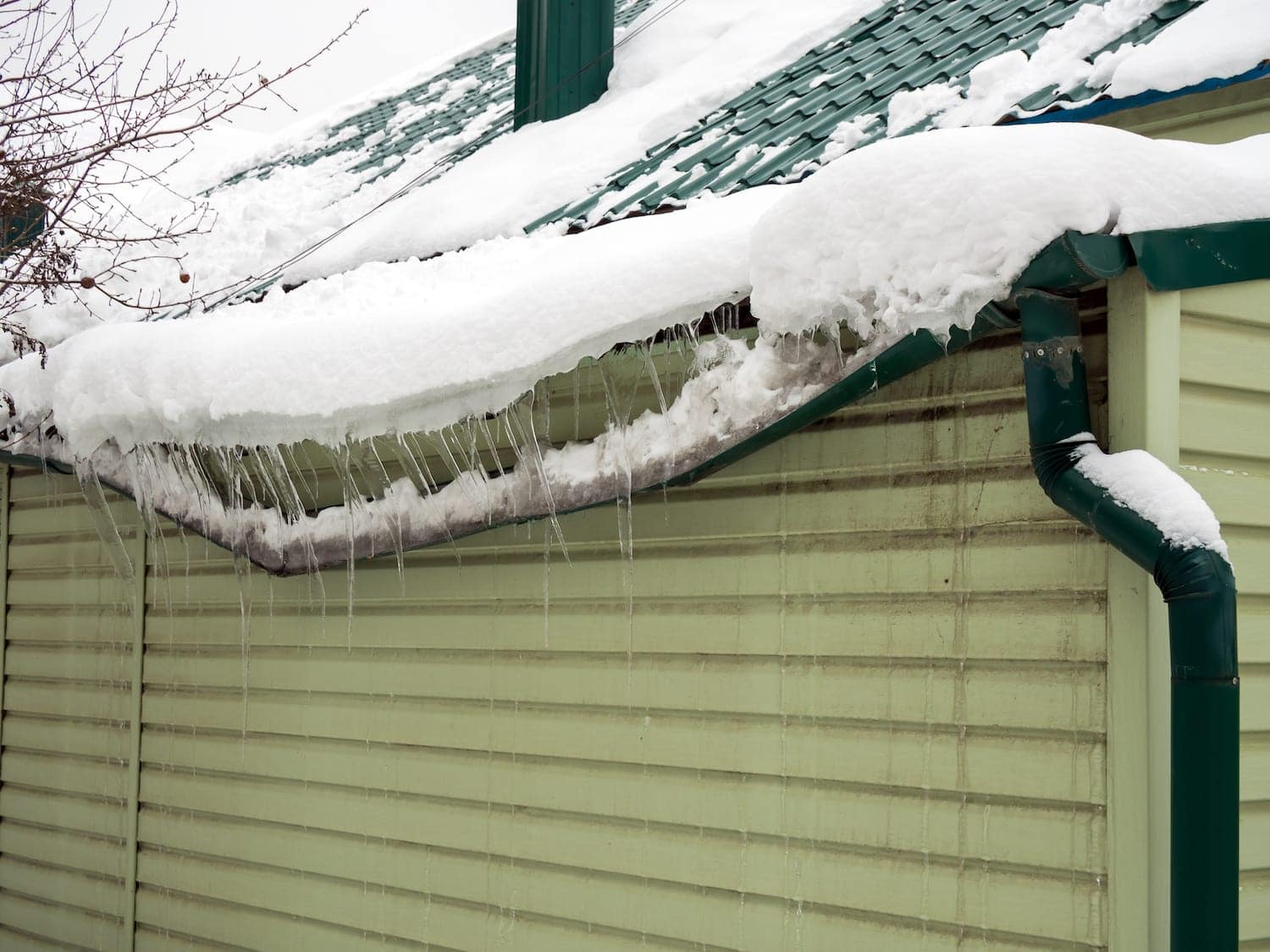
How to Prevent Roof Ice Damage
Now that you know an ice dam forms, you might be curious how to stop it from forming.
Luckily there are lots of ways you can stop an ice dam in its tracks! Here are some of the best ways to prevent ice dams.
1. Have a Roof Inspection 🔎
The first step is to call a professional roofing contractor and schedule a roof inspection. A pro roofer will be able to assess the state of your roof and find problem areas that may be exacerbating your ice dam problem.
2. Clean Your Roof 🧹
Did you know that one of the most common causes of roof damage and accumulated snow is an improperly maintained roof? When homeowners leave debris, such as leaves and twigs, on their roof and gutter system, it stops water from being able to drain from the roof. This can lead to significant damage further down the road.
3. Shovel Snow ❄️
While it can be tempting to just wait until the snow melts, we recommend that homeowners who deal with ice dams take the time to remove snow from their roof to prevent the formation of ice dams.
4. Insulate Ceiling 🧣
Attic air temperature is one of the main causes of ice dams forming. Adding extra attic insulation can keep the warm air inside the attic space and avoid melting snow and ice on the roof.
5. Use Heated Cables 🔥
Can’t find a solution that works? You might want to consider using heated cables to keep ice dams from forming in your gutters. For roughly $100, you can buy 100 ft of heated cables that can be a powerful tool in preventing ice dams.
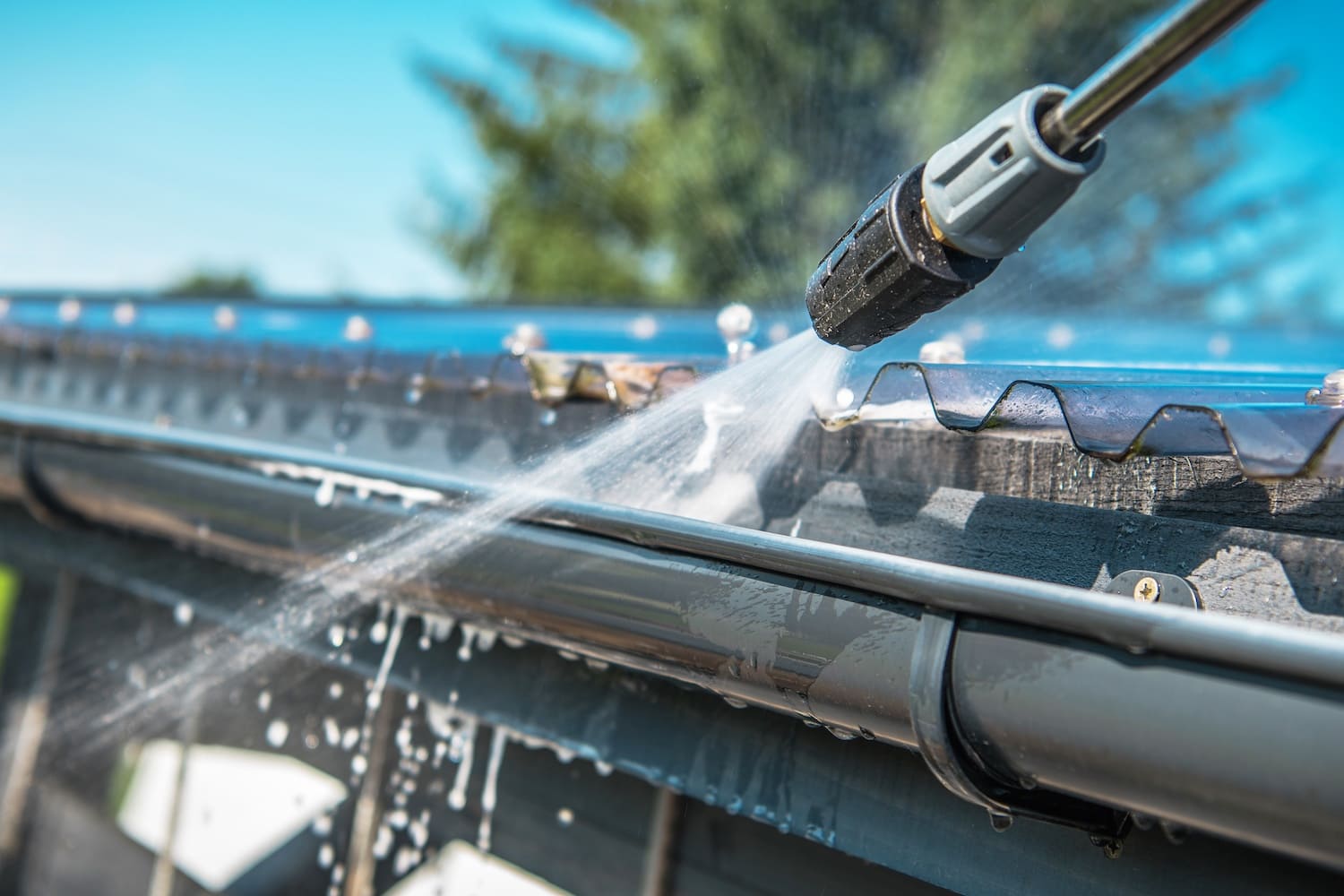
How to Get Rid of Ice Dams
Got an ice dam already? Wait a second before you pull out your hammer and chisel. Breaking your ice dam could actually lead to you damaging your roof and creating an even bigger problem.
Instead, we recommend melting your ice dam with hot water. You can connect a garden hose to a hot water tap and run the water over your ice dam until it is fully melted. If you need additional assistance, you can also fill a pair of stockings with calcium chloride, which will help melt ice quickly.
Get Help From a Roofing Pro
Ready to make your home ice dam free for good? Our roofing experts at Johnson Restoration can help keep your roof system safe! As a highly trained roofing company, we can help assess your roof and assist in ice dam removal. Contact us today to receive a free estimate!
